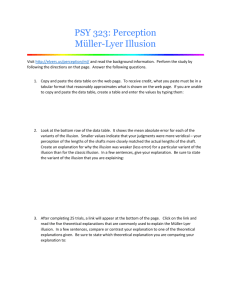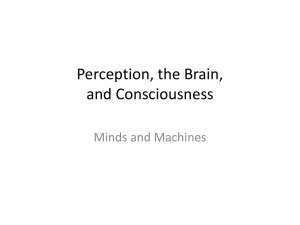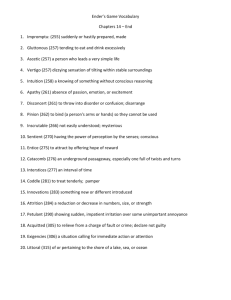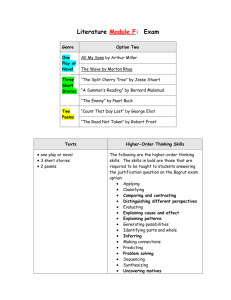Document 13542634
advertisement
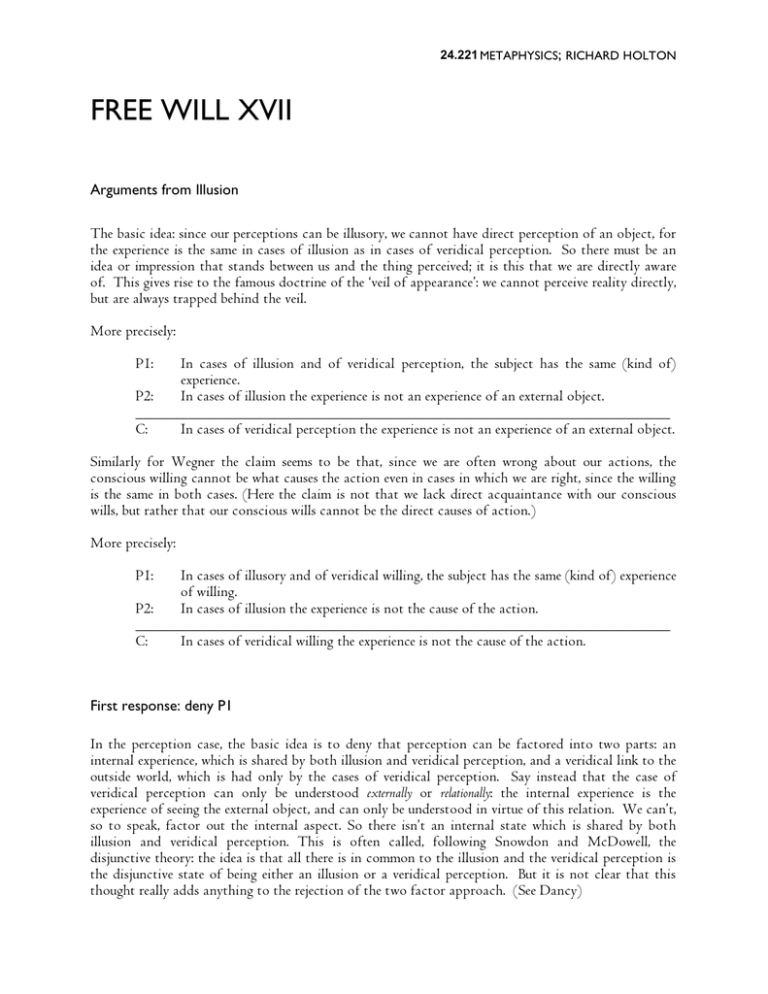
24.221 METAPHYSICS; RICHARD HOLTON FREE WILL XVII Arguments from Illusion The basic idea: since our perceptions can be illusory, we cannot have direct perception of an object, for the experience is the same in cases of illusion as in cases of veridical perception. So there must be an idea or impression that stands between us and the thing perceived; it is this that we are directly aware of. This gives rise to the famous doctrine of the ‘veil of appearance’: we cannot perceive reality directly, but are always trapped behind the veil. More precisely: P1: In cases of illusion and of veridical perception, the subject has the same (kind of) experience. P2: In cases of illusion the experience is not an experience of an external object. _______________________________________________________________________ C: In cases of veridical perception the experience is not an experience of an external object. Similarly for Wegner the claim seems to be that, since we are often wrong about our actions, the conscious willing cannot be what causes the action even in cases in which we are right, since the willing is the same in both cases. (Here the claim is not that we lack direct acquaintance with our conscious wills, but rather that our conscious wills cannot be the direct causes of action.) More precisely: P1: In cases of illusory and of veridical willing, the subject has the same (kind of) experience of willing. P2: In cases of illusion the experience is not the cause of the action. _______________________________________________________________________ C: In cases of veridical willing the experience is not the cause of the action. First response: deny P1 In the perception case, the basic idea is to deny that perception can be factored into two parts: an internal experience, which is shared by both illusion and veridical perception, and a veridical link to the outside world, which is had only by the cases of veridical perception. Say instead that the case of veridical perception can only be understood externally or relationally: the internal experience is the experience of seeing the external object, and can only be understood in virtue of this relation. We can’t, so to speak, factor out the internal aspect. So there isn’t an internal state which is shared by both illusion and veridical perception. This is often called, following Snowdon and McDowell, the disjunctive theory: the idea is that all there is in common to the illusion and the veridical perception is the disjunctive state of being either an illusion or a veridical perception. But it is not clear that this thought really adds anything to the rejection of the two factor approach. (See Dancy) 24.221 METAPHYSICS; RICHARD HOLTON Second response: distinguish the experience of willing from the willing itself The first response requires us to say that perceptions and illusions have nothing in common. Yet it might seem that they obviously have something in common: they are realized by the same kind of neuro­ physiological states. The proponent of the approach will thus have to deny that mental states supervene on neuro-physiological states. It is unlikely that Wegner would be convinced by such a move. So is there an alternative approach that we can take? There is. In fact it involves reintroducing a two-factor approach, though of a rather different sort. Wegner seems to be contending that willings are not an intrinsic part of the process by which somebody acts, but are, at best, extrinsic accompaniments to that process. As he puts it, “conscious will is not inherent in action” (p. 11). One way to go is to concede that the consciousness of the willing is not intrinsic to the process of action; but to deny that it follows that the willing itself is not intrinsic to the action. This approach concedes the conclusion of the argument: the experience of willing is not the cause of the action, but rejects the idea that the willing itself is not the cause of the action. The point is clearly seen if we adopt a higher-order thought account of consciousness. According to such an account, a thought T is conscious iff it is accompanied by a higher-order thought to the effect that the agent is having the thought that T. But note that it is the original, first-order thought T that is conscious in virtue of the higher-order thought ‘I am having the thought that T’; it is not the higher-order thought that is thereby rendered conscious. In order for the higher-order thought to be conscious the agent would need to have a thought about that thought at a still higher level, and so on. Now let us consider Wegner’s data in the light of this account. When an agent forms a conscious willing this consists in a willing, together with a higher-order thought to the effect that this willing has been formed. The experimental work that Wegner cites shows that such higher-order thoughts will frequently be wrong; and this in turn suggests the higher-order thought approach is right to distinguish the willings themselves from thoughts about those willings. But does this experimental work show that the agent’s conscious willings are not the true causes of the action? No. Of course the higher-order thoughts are not the causes of the action. But the higher-order thoughts are not the conscious willings. The conscious willings are the things that the higher-order thoughts are about; and we have no reason for denying that they are the causes of the action. In effect what this approach shows is that conscious willings might indeed contain an element that is extrinsic to the causal process, and hence part of a “separate system”. But this element is the element that makes the willing conscious, rather than being the willing itself. 2
